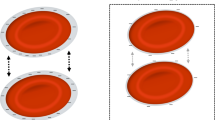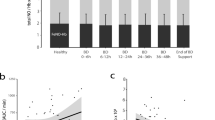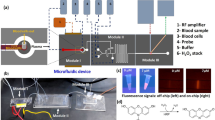Abstract
THE deep magenta colour given by ergothioneine on treatment with buffered diazotized sulphanilic acid followed by 10 N sodium hydroxide has been used for the determination of ergothioneine in blood1. The specificity of this reaction comes into question and has been considered by Hunter2.
This is a preview of subscription content, access via your institution
Access options
Subscribe to this journal
Receive 51 print issues and online access
$199.00 per year
only $3.90 per issue
Buy this article
- Purchase on SpringerLink
- Instant access to full article PDF
Prices may be subject to local taxes which are calculated during checkout
Similar content being viewed by others
References
Hunter, G., Biochem. J., 22, 4 (1928); Canad. J. Res., 27, E, 230 (1949).
Hunter, G., J. Chem. Soc., 2343 (1930).
Lawson, A., Morley, H. V., and Woolf, L. I., Biochem. J., 47, 513 (1950).
Cf. Fargher, R. G., and Pyman, F. L., J. Chem. Soc., 217 (1919).
Author information
Authors and Affiliations
Rights and permissions
About this article
Cite this article
LAWSON, A., MORLEY, H. & WOOLF, L. Specificity and Mechanism of the Hunter Reaction for Ergothioneine. Nature 167, 82–83 (1951). https://doi.org/10.1038/167082a0
Issue date:
DOI: https://doi.org/10.1038/167082a0



